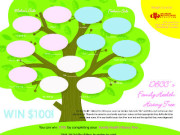Sesame Street recently became a lot more relatable for the more than 3.5 million Americans living with an autism spectrum disorder, and it’s all thanks to Julia, the latest addition to the show’s cast who may be able to help reduce “the stigma of autism.”
“Children with autism are five times more likely to get bullied,” Dr. Jeanette Betancourt told People Magazine. “And with one in 68 children having autism, that’s a lot of bullying. Our goal is to bring forth what all children share in common, not their differences. Children with autism share in the joy of playing and loving and being friends and being part of a group.”
Julia will appear in a series of online videos and interactive games, which are aimed at families with autistic children between the ages of two and five. So far, she’s already appeared in her own digital storybook, titled “We’re Amazing, 1,2,3.”According to Michael Robb, Director of Research for Common Sense Media, an organization that rates and reviews media aimed at children, Sesame Street’s addition is “pretty groundbreaking.”
In “We’re Amazing, 1,2,3,” Julia, Elmo, and Elmo’s friend Abby Cadabby play on the playground. As they do, Elmo helps Abby understand that Julia plays differently than them, and through his patience, understanding, and guidance, he helps Abby understand Julia.
“Elmo’s daddy told Elmo that Julia has autism,” he says. “So she does things a little differently. Sometimes Elmo talks to Julia using fewer words and says the same thing a few times.”
“It can be difficult to start a conversation about children with disabilities. It’s even harder when that difference isn’t visible,” Robb told NPR.
This approach is key. By introducing children to Julia’s behaviors, it helps children understand.
“This is what makes our project so unique,” said Betancourt. “When we explain from a child’s point of view that there are certain behaviors, such as slapping their hands or making noises, to express excitement or unhappiness, it helps younger children to understand how to interact with their autistic peers. It makes children more comfortable and therefore more inclusive.”
As for Julia’s TV debut, Betancourt is waiting to hear back from the autism community before the show introduces her on TV.
























